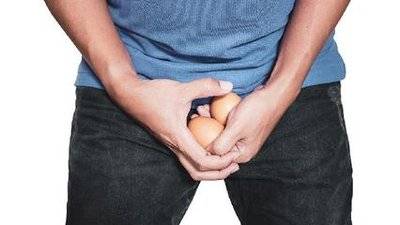What are the causes of epididymitis? The occurrence of epididymitis does indeed affect the health of patients. Once such a disease arises, we should scientifically ensure proper treatment; additionally, we hope that male friends will develop good lifestyle and dietary habits, avoid inducing factors, and carry out effective prevention against epididymitis. Therefore, it is necessary to understand the causes of epididymitis.
Analysis of the four major causes of epididymitis
1. Low immunity
Epididymitis commonly occurs in young and middle-aged men, which is closely related to the high work and study pressure, excessive fatigue, and irregular lifestyles in this age group, leading to a decline in the body’s resistance. Pathogenic bacteria often take advantage of this opportunity to invade the epididymis and cause inflammation.
2. The environment easily causes urinary tract infections
The front of most men’s underwear is double-layered, enclosing the ** and scrotum together, resulting in prolonged high temperatures and humidity in the ** area, which is conducive to bacterial growth, thereby leading to urinary tract infections and subsequently to epididymitis.
3. Secondary to other infections in the urinary reproductive system
The most common pathogenic bacteria causing epididymitis are Escherichia coli and Staphylococcus. These bacteria often enter the epididymis through the retrograde flow from other inflammations in the urinary reproductive system, leading to proliferation in the epididymis and causing epididymitis. Moreover, procedures involving the urethra or frequent catheterization are also common triggers for acute epididymitis.
4. Unhealthy lifestyle habits
Prolonged sitting or long hours of cycling can compress the epididymis, affecting its blood circulation and easily leading to inflammation. Irregular sexual activities or individuals who frequently retain ejaculation or experience ** interruptions are also prone to epididymitis. Excessive alcohol consumption and the intake of large amounts of spicy and irritating foods can exacerbate prostatitis symptoms, thereby triggering epididymitis.
What harms can epididymitis cause?
1. The large number of metabolic products generated from the inflammatory response can also be toxic to sperm or alter the survival environment of sperm, leading to decreased sperm motility, increased dead sperm, a rise in the rate of abnormal sperm, and reduced sperm count.
2. If epididymitis is caused by infection from Neisseria gonorrhoeae, Mycobacterium tuberculosis, Mycoplasma, Chlamydia, and other pathogens, not only does it induce an inflammatory response that damages sperm, but it can also easily lead to narrowing or blockage of the epididymal duct, resulting in partial or complete obstruction where the tail of the epididymis connects with the ductus deferens. This is a type of irreversible sequela of epididymitis, where sperm are trapped inside the epididymal duct, unable to exit, eventually dying or being destroyed, leading to obstructive oligospermia or azoospermia.
3. Some pathogens (such as Mycoplasma and Chlamydia) can adhere to the surface of the sperm, reducing or even eliminating their motility.
4. When inflammation occurs in the epididymis, the body’s defense system will act immediately, with white blood cells, lymphocytes, and other immune cells and immune substances entering the inflamed epididymal duct, producing a clearance response to the pathogens. This creates what is known in medicine as an immune response, generating immune cells, while the recognition ability of immune cells towards the body’s own tissues significantly declines, causing them to directly engage in immune reactions with antigens on the surface of sperm or in seminal plasma, forming anti-sperm antibodies.
5. The toxins produced by pathogens can also kill sperm, which are inherently fragile, significantly increasing their mortality rate.
6. After the epididymis is infected by pathogens, some pathogens (such as Escherichia coli) can directly damage the sperm in the epididymal duct, inhibiting their motility or causing sperm aggregation, thereby reducing their activity.


